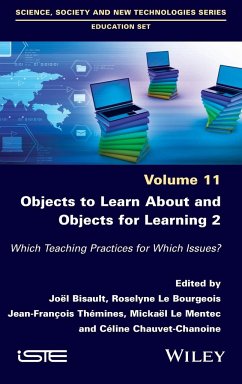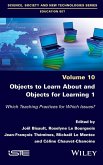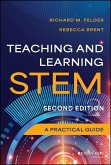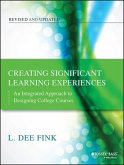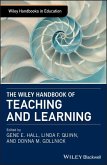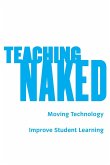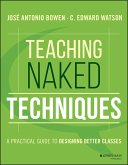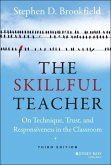Objects to Learn about and Objects for Learning 2
Which Teaching Practices for Which Issues?
Herausgegeben:Bisault, Joel; Le Bourgeois, Roselyne; Themines, Jean-Francois; Le Mentec, Mickael; Chauvet-Chanoine, Celine
Objects to Learn about and Objects for Learning 2
Which Teaching Practices for Which Issues?
Herausgegeben:Bisault, Joel; Le Bourgeois, Roselyne; Themines, Jean-Francois; Le Mentec, Mickael; Chauvet-Chanoine, Celine
- Gebundenes Buch
- Merkliste
- Auf die Merkliste
- Bewerten Bewerten
- Teilen
- Produkt teilen
- Produkterinnerung
- Produkterinnerung
Resulting from a conference that took place in Amiens, France, in June 2019, this book examines the place and role of objects centered in teaching practices from kindergarten to university, both in the context of France and elsewhere. These "objects for learning" are considered in their physicality as productions, work or signs that are used for learning. They become "objects to learn about" when the object itself is the learning objective.
This book offers a cross-disciplinary perspective, linking the different disciplinary fields studied and the many reference sources used by the authors.…mehr
Andere Kunden interessierten sich auch für
![Objects to Learn about and Objects for Learning 1 Objects to Learn about and Objects for Learning 1]() Objects to Learn about and Objects for Learning 1187,99 €
Objects to Learn about and Objects for Learning 1187,99 €![Teaching and Learning Stem Teaching and Learning Stem]() Richard M. FelderTeaching and Learning Stem52,99 €
Richard M. FelderTeaching and Learning Stem52,99 €![Creating Significant Learning Experiences Creating Significant Learning Experiences]() L. Dee FinkCreating Significant Learning Experiences48,99 €
L. Dee FinkCreating Significant Learning Experiences48,99 €![The Wiley Handbook of Teaching and Learning The Wiley Handbook of Teaching and Learning]() The Wiley Handbook of Teaching and Learning236,99 €
The Wiley Handbook of Teaching and Learning236,99 €![Teaching Naked Teaching Naked]() José Antonio BowenTeaching Naked30,99 €
José Antonio BowenTeaching Naked30,99 €![Teaching Naked Techniques Teaching Naked Techniques]() José Antonio BowenTeaching Naked Techniques35,99 €
José Antonio BowenTeaching Naked Techniques35,99 €![The Skillful Teacher The Skillful Teacher]() Stephen D. BrookfieldThe Skillful Teacher37,99 €
Stephen D. BrookfieldThe Skillful Teacher37,99 €-
-
-
Resulting from a conference that took place in Amiens, France, in June 2019, this book examines the place and role of objects centered in teaching practices from kindergarten to university, both in the context of France and elsewhere. These "objects for learning" are considered in their physicality as productions, work or signs that are used for learning. They become "objects to learn about" when the object itself is the learning objective.
This book offers a cross-disciplinary perspective, linking the different disciplinary fields studied and the many reference sources used by the authors. This two-volume work offers an overview of current research on the subject, with this second volume focusing on objects in representations of space and time, then on learners' activities in the making or use of objects, before concluding with different cultural and philosophical perspectives on objects
Hinweis: Dieser Artikel kann nur an eine deutsche Lieferadresse ausgeliefert werden.
This book offers a cross-disciplinary perspective, linking the different disciplinary fields studied and the many reference sources used by the authors. This two-volume work offers an overview of current research on the subject, with this second volume focusing on objects in representations of space and time, then on learners' activities in the making or use of objects, before concluding with different cultural and philosophical perspectives on objects
Hinweis: Dieser Artikel kann nur an eine deutsche Lieferadresse ausgeliefert werden.
Produktdetails
- Produktdetails
- Verlag: Wiley & Sons / Wiley-ISTE
- Artikelnr. des Verlages: 1W786307740
- 1. Auflage
- Seitenzahl: 304
- Erscheinungstermin: 5. April 2022
- Englisch
- Abmessung: 240mm x 161mm x 21mm
- Gewicht: 584g
- ISBN-13: 9781786307743
- ISBN-10: 178630774X
- Artikelnr.: 63400557
- Herstellerkennzeichnung
- Libri GmbH
- Europaallee 1
- 36244 Bad Hersfeld
- gpsr@libri.de
- Verlag: Wiley & Sons / Wiley-ISTE
- Artikelnr. des Verlages: 1W786307740
- 1. Auflage
- Seitenzahl: 304
- Erscheinungstermin: 5. April 2022
- Englisch
- Abmessung: 240mm x 161mm x 21mm
- Gewicht: 584g
- ISBN-13: 9781786307743
- ISBN-10: 178630774X
- Artikelnr.: 63400557
- Herstellerkennzeichnung
- Libri GmbH
- Europaallee 1
- 36244 Bad Hersfeld
- gpsr@libri.de
Joel Bisault is Emeritus Professor at the University of Picardie Jules Verne, France, and a member of the CAREF laboratory. His research focuses on science education in elementary school and on school objects. Roselyne Le Bourgeois is an honorary lecturer at the University of Picardie Jules Verne, France, and a member of the CAREF laboratory. Her research focuses on the teaching of history in relation to other fields from kindergarten to the end of elementary school. Jean-Francois Themines is a Professor at the University of Caen Normandy, France, and a researcher at the ESO laboratory. His research focuses on didactic approaches to the teaching of geography in secondary and higher education as well as the geography of educational inequalities. Mickael Le Mentec is a lecturer at the University of Picardie Jules Verne, France, and a member of the CAREF laboratory. His research focuses on the socio educational uses of digital technologies. Celine Chauvet-Chanoine is a school teacher and holds a doctorate in educational sciences from the CAREF laboratory of the University of Picardie Jules Verne, France. Her research focuses on science education in kindergarten, on school objects and on the professional identity of teachers.
Preface. From a Conference to a Book on the Role of Objects in the Practices of Teachers xi
Joël BISAULT, Roselyne LE BOURGEOIS, Jean-François THÉMINES, Mickaël LE MENTEC and Céline CHAUVET-CHANOINE
Acknowledgements xxi
Part 1. Objects and Representations of Space and Time 1
Chapter 1. The Map and the Game: Objects for Learning Geographical Points of Reference in Elementary School 3
Xavier LEROUX
1.1. Introduction 3
1.2. Points of reference: A special place in geography as it is taught 4
1.3. Points of reference in upper elementary curricula 6
1.4. Creating a game about geographical points of reference 9
1.4.1. Launch process 9
1.4.2. What points of reference were chosen initially? 12
1.4.3. Game stabilization and lifespan 15
1.5. Evaluation periods 19
1.6. Conclusion 22
1.7. References 23
Chapter 2. The Didactic Use of Physical Objects in the Kindergarten School Calendar Ritual: A Case Study 25
Maria MOUMOULIDOU
2.1. Introduction 25
2.2. Theoretical framework 25
2.3. The official kindergarten school curricula 28
2.4. Physical context and the technique of the calendar ritual activity 29
2.5. Research methodology 31
2.6. Data analysis and discussion 32
2.7. Conclusion 40
2.8. References 42
Chapter 3. The Map in the Core School, An Object for Learning 45
Sylvie CONSIDÉRE, Anne GLAUDEL, Maud VERHERVE and Mickaël GLAUDEL
3.1. Introduction 45
3.2. A reference framework in geographical pedagogy for thinking about maps 47
3.2.1. The map, a disciplinary object 47
3.2.2. The geographic knowledge and discourses in play 49
3.3. Understanding students' geographic knowledge through map production 50
3.3.1. The map as a modality for students to access geographical knowledge 50
3.3.2. A corpus of student maps and its analysis 53
3.4. The map object: Between images of daily practices and formal academic products 55
3.4.1. The place of daily practices in students' products 55
3.4.2. The mark of formal school geography 62
3.5. Conclusion: Proposals for revitalizing teaching practices for geography 69
3.6. References 72
Chapter 4. Professional Report: Using a Song as a Mediating Object for Learning Temporal Points of Reference 75
Christine CROSET
4.1. Introduction 75
4.2. Conceptual framework 76
4.2.1. Learning about time 76
4.2.2. Teaching and learning 78
4.2.3. Research questions 80
4.3. Methodology 80
4.4. Results and discussion 82
4.4.1. Operational signs 82
4.4.2. What mediations enable understanding this object? 84
4.4.3. Problematization and conditions for learning 85
4.5. Conclusion 85
4.6. Appendix 86
4.7. References 93
Chapter 5. Professional Report: From Tangible Objects to Interactive Maps for Moving Around and Learning an Area - Two Examples with People with Visual Impairments 95
Quentin CHIBAUDEL, Lachezar DIMITROV, Bernard ORIOLA, Christophe JOUFFRAIS, Katerina FIBIGEROVA and Valérie TARTAS
5.1. Introduction 95
5.2. Two research examples proposing learning objects for learning about space 96
5.2.1. General methodology 96
5.2.2. From tactile objects to audio-tangible objects for a better understanding of space: First example 97
5.2.3. Interactive tactile map: Second example 102
5.2.4. Results 105
5.3. Conclusion 107
5.4. Acknowledgments 108
5.5. References 109
Joël BISAULT, Roselyne LE BOURGEOIS, Jean-François THÉMINES, Mickaël LE MENTEC and Céline CHAUVET-CHANOINE
Acknowledgements xxi
Part 1. Objects and Representations of Space and Time 1
Chapter 1. The Map and the Game: Objects for Learning Geographical Points of Reference in Elementary School 3
Xavier LEROUX
1.1. Introduction 3
1.2. Points of reference: A special place in geography as it is taught 4
1.3. Points of reference in upper elementary curricula 6
1.4. Creating a game about geographical points of reference 9
1.4.1. Launch process 9
1.4.2. What points of reference were chosen initially? 12
1.4.3. Game stabilization and lifespan 15
1.5. Evaluation periods 19
1.6. Conclusion 22
1.7. References 23
Chapter 2. The Didactic Use of Physical Objects in the Kindergarten School Calendar Ritual: A Case Study 25
Maria MOUMOULIDOU
2.1. Introduction 25
2.2. Theoretical framework 25
2.3. The official kindergarten school curricula 28
2.4. Physical context and the technique of the calendar ritual activity 29
2.5. Research methodology 31
2.6. Data analysis and discussion 32
2.7. Conclusion 40
2.8. References 42
Chapter 3. The Map in the Core School, An Object for Learning 45
Sylvie CONSIDÉRE, Anne GLAUDEL, Maud VERHERVE and Mickaël GLAUDEL
3.1. Introduction 45
3.2. A reference framework in geographical pedagogy for thinking about maps 47
3.2.1. The map, a disciplinary object 47
3.2.2. The geographic knowledge and discourses in play 49
3.3. Understanding students' geographic knowledge through map production 50
3.3.1. The map as a modality for students to access geographical knowledge 50
3.3.2. A corpus of student maps and its analysis 53
3.4. The map object: Between images of daily practices and formal academic products 55
3.4.1. The place of daily practices in students' products 55
3.4.2. The mark of formal school geography 62
3.5. Conclusion: Proposals for revitalizing teaching practices for geography 69
3.6. References 72
Chapter 4. Professional Report: Using a Song as a Mediating Object for Learning Temporal Points of Reference 75
Christine CROSET
4.1. Introduction 75
4.2. Conceptual framework 76
4.2.1. Learning about time 76
4.2.2. Teaching and learning 78
4.2.3. Research questions 80
4.3. Methodology 80
4.4. Results and discussion 82
4.4.1. Operational signs 82
4.4.2. What mediations enable understanding this object? 84
4.4.3. Problematization and conditions for learning 85
4.5. Conclusion 85
4.6. Appendix 86
4.7. References 93
Chapter 5. Professional Report: From Tangible Objects to Interactive Maps for Moving Around and Learning an Area - Two Examples with People with Visual Impairments 95
Quentin CHIBAUDEL, Lachezar DIMITROV, Bernard ORIOLA, Christophe JOUFFRAIS, Katerina FIBIGEROVA and Valérie TARTAS
5.1. Introduction 95
5.2. Two research examples proposing learning objects for learning about space 96
5.2.1. General methodology 96
5.2.2. From tactile objects to audio-tangible objects for a better understanding of space: First example 97
5.2.3. Interactive tactile map: Second example 102
5.2.4. Results 105
5.3. Conclusion 107
5.4. Acknowledgments 108
5.5. References 109
Preface. From a Conference to a Book on the Role of Objects in the Practices of Teachers xi
Joël BISAULT, Roselyne LE BOURGEOIS, Jean-François THÉMINES, Mickaël LE MENTEC and Céline CHAUVET-CHANOINE
Acknowledgements xxi
Part 1. Objects and Representations of Space and Time 1
Chapter 1. The Map and the Game: Objects for Learning Geographical Points of Reference in Elementary School 3
Xavier LEROUX
1.1. Introduction 3
1.2. Points of reference: A special place in geography as it is taught 4
1.3. Points of reference in upper elementary curricula 6
1.4. Creating a game about geographical points of reference 9
1.4.1. Launch process 9
1.4.2. What points of reference were chosen initially? 12
1.4.3. Game stabilization and lifespan 15
1.5. Evaluation periods 19
1.6. Conclusion 22
1.7. References 23
Chapter 2. The Didactic Use of Physical Objects in the Kindergarten School Calendar Ritual: A Case Study 25
Maria MOUMOULIDOU
2.1. Introduction 25
2.2. Theoretical framework 25
2.3. The official kindergarten school curricula 28
2.4. Physical context and the technique of the calendar ritual activity 29
2.5. Research methodology 31
2.6. Data analysis and discussion 32
2.7. Conclusion 40
2.8. References 42
Chapter 3. The Map in the Core School, An Object for Learning 45
Sylvie CONSIDÉRE, Anne GLAUDEL, Maud VERHERVE and Mickaël GLAUDEL
3.1. Introduction 45
3.2. A reference framework in geographical pedagogy for thinking about maps 47
3.2.1. The map, a disciplinary object 47
3.2.2. The geographic knowledge and discourses in play 49
3.3. Understanding students' geographic knowledge through map production 50
3.3.1. The map as a modality for students to access geographical knowledge 50
3.3.2. A corpus of student maps and its analysis 53
3.4. The map object: Between images of daily practices and formal academic products 55
3.4.1. The place of daily practices in students' products 55
3.4.2. The mark of formal school geography 62
3.5. Conclusion: Proposals for revitalizing teaching practices for geography 69
3.6. References 72
Chapter 4. Professional Report: Using a Song as a Mediating Object for Learning Temporal Points of Reference 75
Christine CROSET
4.1. Introduction 75
4.2. Conceptual framework 76
4.2.1. Learning about time 76
4.2.2. Teaching and learning 78
4.2.3. Research questions 80
4.3. Methodology 80
4.4. Results and discussion 82
4.4.1. Operational signs 82
4.4.2. What mediations enable understanding this object? 84
4.4.3. Problematization and conditions for learning 85
4.5. Conclusion 85
4.6. Appendix 86
4.7. References 93
Chapter 5. Professional Report: From Tangible Objects to Interactive Maps for Moving Around and Learning an Area - Two Examples with People with Visual Impairments 95
Quentin CHIBAUDEL, Lachezar DIMITROV, Bernard ORIOLA, Christophe JOUFFRAIS, Katerina FIBIGEROVA and Valérie TARTAS
5.1. Introduction 95
5.2. Two research examples proposing learning objects for learning about space 96
5.2.1. General methodology 96
5.2.2. From tactile objects to audio-tangible objects for a better understanding of space: First example 97
5.2.3. Interactive tactile map: Second example 102
5.2.4. Results 105
5.3. Conclusion 107
5.4. Acknowledgments 108
5.5. References 109
Joël BISAULT, Roselyne LE BOURGEOIS, Jean-François THÉMINES, Mickaël LE MENTEC and Céline CHAUVET-CHANOINE
Acknowledgements xxi
Part 1. Objects and Representations of Space and Time 1
Chapter 1. The Map and the Game: Objects for Learning Geographical Points of Reference in Elementary School 3
Xavier LEROUX
1.1. Introduction 3
1.2. Points of reference: A special place in geography as it is taught 4
1.3. Points of reference in upper elementary curricula 6
1.4. Creating a game about geographical points of reference 9
1.4.1. Launch process 9
1.4.2. What points of reference were chosen initially? 12
1.4.3. Game stabilization and lifespan 15
1.5. Evaluation periods 19
1.6. Conclusion 22
1.7. References 23
Chapter 2. The Didactic Use of Physical Objects in the Kindergarten School Calendar Ritual: A Case Study 25
Maria MOUMOULIDOU
2.1. Introduction 25
2.2. Theoretical framework 25
2.3. The official kindergarten school curricula 28
2.4. Physical context and the technique of the calendar ritual activity 29
2.5. Research methodology 31
2.6. Data analysis and discussion 32
2.7. Conclusion 40
2.8. References 42
Chapter 3. The Map in the Core School, An Object for Learning 45
Sylvie CONSIDÉRE, Anne GLAUDEL, Maud VERHERVE and Mickaël GLAUDEL
3.1. Introduction 45
3.2. A reference framework in geographical pedagogy for thinking about maps 47
3.2.1. The map, a disciplinary object 47
3.2.2. The geographic knowledge and discourses in play 49
3.3. Understanding students' geographic knowledge through map production 50
3.3.1. The map as a modality for students to access geographical knowledge 50
3.3.2. A corpus of student maps and its analysis 53
3.4. The map object: Between images of daily practices and formal academic products 55
3.4.1. The place of daily practices in students' products 55
3.4.2. The mark of formal school geography 62
3.5. Conclusion: Proposals for revitalizing teaching practices for geography 69
3.6. References 72
Chapter 4. Professional Report: Using a Song as a Mediating Object for Learning Temporal Points of Reference 75
Christine CROSET
4.1. Introduction 75
4.2. Conceptual framework 76
4.2.1. Learning about time 76
4.2.2. Teaching and learning 78
4.2.3. Research questions 80
4.3. Methodology 80
4.4. Results and discussion 82
4.4.1. Operational signs 82
4.4.2. What mediations enable understanding this object? 84
4.4.3. Problematization and conditions for learning 85
4.5. Conclusion 85
4.6. Appendix 86
4.7. References 93
Chapter 5. Professional Report: From Tangible Objects to Interactive Maps for Moving Around and Learning an Area - Two Examples with People with Visual Impairments 95
Quentin CHIBAUDEL, Lachezar DIMITROV, Bernard ORIOLA, Christophe JOUFFRAIS, Katerina FIBIGEROVA and Valérie TARTAS
5.1. Introduction 95
5.2. Two research examples proposing learning objects for learning about space 96
5.2.1. General methodology 96
5.2.2. From tactile objects to audio-tangible objects for a better understanding of space: First example 97
5.2.3. Interactive tactile map: Second example 102
5.2.4. Results 105
5.3. Conclusion 107
5.4. Acknowledgments 108
5.5. References 109

